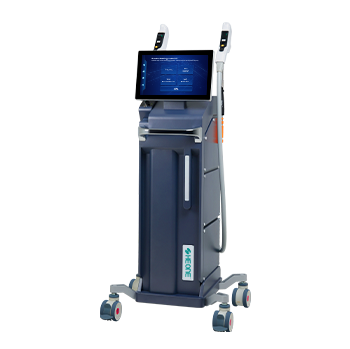Classification by operation mode Due to the different working materials, excitation methods, and application purposes used by lasers, their operation modes and working conditions are correspondingly different, which can be divided into the following main types.
① Continuous laser, its working characteristic is the excitation of the working substance and the corresponding laser output, which can be continuously carried out in a continuous manner over a long period of time. Solid-state lasers excited by continuous light sources and gas lasers that work by continuous electrical excitation And semiconductor lasers fall into this category. Since the overheating effect of the device is inevitably produced during continuous operation, it is necessary to take appropriate cooling measures in most cases.
②Single-pulse laser. For this type of laser, the excitation of the working substance and the corresponding laser emission are equal in terms of time.It is a single pulse process. General solid-state lasers, liquid lasers and some special gas lasers all operate in this way. At this time, the thermal effect of the device can be ignored, so special cooling measures are not required.
③Repetitive pulse laser. The characteristic of this type of device is that its output is a series of repetitive laser pulses. For this reason, the device can be excited by repetitive pulses, or be excited in a continuous manner but modulate the laser oscillation process in a certain way to Obtaining repetitive pulse laser output usually requires effective cooling measures for the device.
④ Modulation of the laser, which specifically refers to a pulsed laser that uses a certain switching technology to obtain a higher output power. Its working principle is to not cause laser oscillation after the population inversion state of the working substance is formed (the switch is in the off state). ), after the number of particles has accumulated to a high enough level, the switch is suddenly and instantaneously turned on, so that a very strong laser oscillation and high-power pulsed laser output can be formed in a relatively short period of time (for example, 10 to 10 seconds) (see Technology” ””””class=link>laser tuning technology).
⑤Single-mode and frequency-stabilized lasers, single-mode lasers refer to lasers that operate in single transverse mode or single longitudinal mode after adopting certain mode limiting technology, and frequency stabilized lasers It refers to a special laser device that adopts certain automatic control measures to stabilize the output wavelength or frequency of the laser within a certain accuracy range. In some cases, it can also be made into a special laser device that has both single-mode operation and automatic frequency stability control capabilities. (See laser frequency stabilization technology).
⑥ Tunable laser, under normal circumstances, the output wavelength of the laser is fixed, but after adopting special tuning technology, the output laser wavelength of some lasers can be within a certain range The internal continuous and controllable changes, this type of laser is called tunable laser (see laser tuning technology).
Further reading:LED milk light activated beauty instrument











